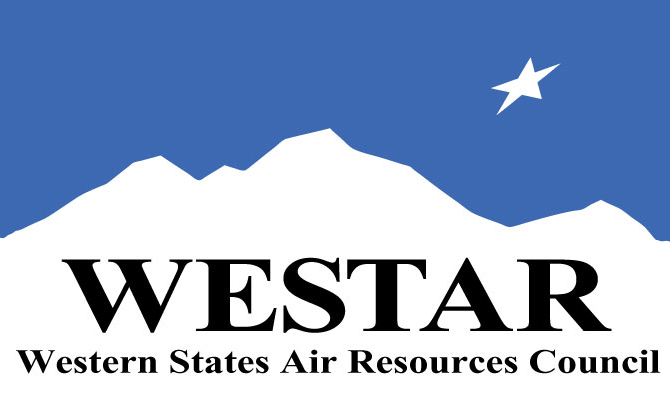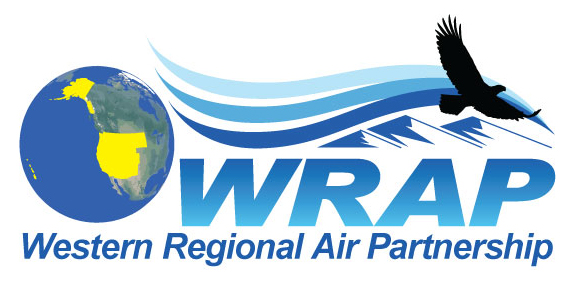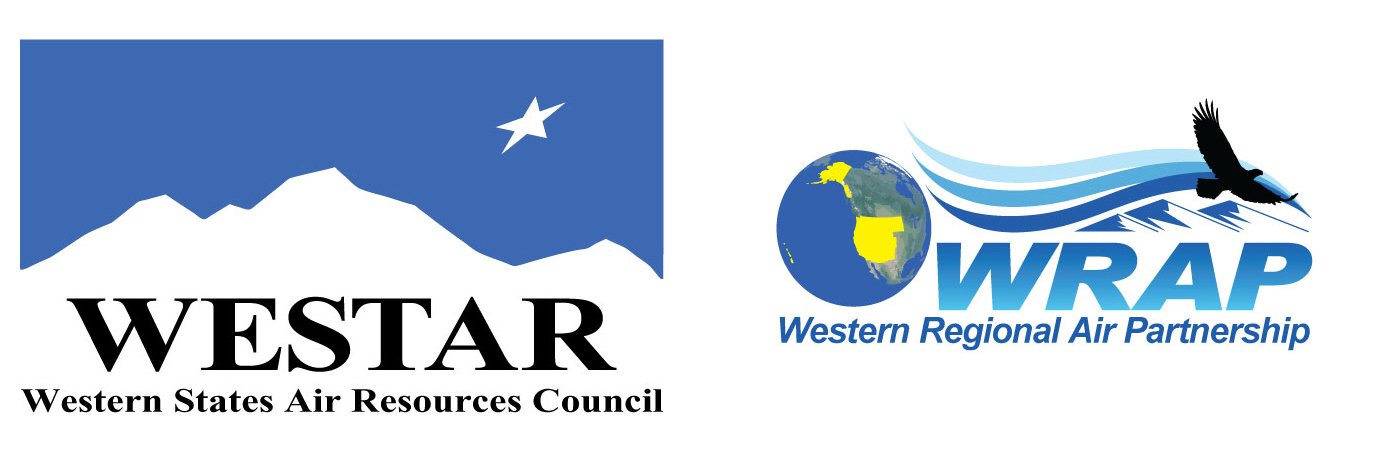Regional Haze Planning Work Group
The purpose of the WRAP Regional Haze Planning Work Group (RHPWG) is to prepare and implement the framework to support regional planning for the 15-state WESTAR/WRAP region, to protect and improve visibility in Class I federal areas and to assure needed elements will be available for Implementation Plans for the third planning period of the federal Regional Haze Rule (RHR). Regional Haze Implementation Plan preparation is a multi-year effort and must incorporate time for the required consultation and public review process. These plans are to continue protection and improvement efforts of visual air quality for visitors to the 118 Class I federal areas of the WESTAR/WRAP region since the inception of the RHR in 1999.
Changes to the RHR will be considered for the third planning period that has a 2038 nominal milestone date. Review of the existing RHR requirements to address the basic State Implementation Plan planning needs is a starting point. The RHPWG will advocate for changes to the RHR that address strategies for implementation across all WRAP member agencies to address and improve visual air quality. Timely changes to the RHR and release of planning guidance would provide the basis for a successful visibility program in the future. A key element of western visibility planning will be to continue substantive consultation between WRAP members – States, Tribes, Local Air Agencies, Federal Land Managers (FLMs), and U.S. EPA about planning strategies.
Each WESTAR/WRAP region air quality program encompasses unique needs and requires specific emphasis to meet their goals. However, there are certain common themes that weave them together including:
- Staff (capacity) – there is wide variation in the staff sizes among WRAP members.
- Sources – there is wide variation across the WESTAR/WRAP region by jurisdiction for types of air pollution sources, emission magnitudes, approaches to emissions control and reduction strategies, contributions of uncontrollable international and natural sources, and other factors.
- Funding – no significant amount of funding has been available from U.S. EPA for the federally-required regional planning efforts of the past 10+ years. Resources have been largely provided by States and FLMs, with lesser support from U.S. EPA. All WRAP members also contribute in-kind to the regional planning effort.
- Training (capability) – new personnel across WESTAR/WRAP jurisdictions will need training and other support to participate fully and manage planning efforts for the regional visibility program.
Workplan Scope Topical Areas
- Identify work needed and plan uses of WRAP and WESTAR products and services
- Facilitate support of Implementation Plan development to protect and improve visibility and reduce regional haze in Class I federal areas
- Discuss needs to link other air quality protection and climate change mitigation and adaptation programs to visibility protection and improvement
- Provide educational opportunities for the WRAP membership, i.e., States, Tribes, Local Air Agencies, Federal Land Managers, and U.S. EPA, as well as industry and environmental organizations
- Identify needs and services from the Technical Support System
- Identify SIP, TIP, and FIP planning target dates
- Assure collaboration, coordination, and consultation related to visibility protection and improvement between WRAP member agencies
Annual Action Items
- RHPWG periodic calls and meetings, reports on any deliverables completed
- Maintain distribution and contact list
- Prepare RHPWG deliverables and adapt products from other Work Groups and other sources in support of Topical Areas listed above
This work must take into consideration differing levels of expertise, programmatic resources and approaches, cultural necessities, and needs by WESTAR-WRAP member agency. Several of these activities will involve close coordination within WESTAR-WRAP facilitated by the Technical Steering Committee (TSC), as is done with other WRAP Work Groups.
The Co-Chairs will provide a summary report to the TSC at each TSC/WG Co-Chairs meeting, about the status of activities, findings, and work products related to the topics and for the action items described above. Participation in the RHPWG will be dynamic and evolving depending on topics and action items being addressed and the interests of the Work Group’s members. The Co-Chairs, with support from WESTAR/WRAP staff, will maintain a distribution list to be updated when needed. Participation will be tracked on the Regional Haze Planning Work Group web page. No formal detailed workplan is required but welcome. The RHPWG will have regular virtual or in-person meetings arranged by Co-Chairs, at least quarterly. The principal purpose of RHPWG meetings is to provide a regular opportunity for discussion of progress to protect and improve visibility at WESTAR/WRAP region Class I federal areas, air quality planning for the Regional Haze program, and other topics. If necessary, Subcommittees or Teams may be defined by the RHPWG to execute, track, and provide oversight for both in-kind and/or any contractor-supported RHPWG projects, and will meet as needed at self-defined separate intervals. Any active Teams and Subcommittees will report regularly to the RHPWG. The RHPWG Co-Chairs will communicate on relevant matters with the TSC and Board.
None at this time.
Round 2 Regional Haze Rule planning effort
The purpose of the WRAP Regional Haze Planning Work Group (RHPWG) is to prepare the framework to support regional planning for the 15 western states, so that needed elements will be available for RH SIP submissions in a timely fashion, to meet the July 2021 deadline for implementation plans to be submitted each of the 15 states and the City of Albuquerque within the WESTAR and WRAP region, for the second planning period of the federal Regional Haze Rule for visibility protection at 118 Class I areas. This includes a training element for new Regional Haze State Implementation Plan (RHSIP) writers, as evidenced by the webinars and resource links found on this webpage.
The RHPWG formed several topical subcommittees from among its members to coordinate and track work by other WRAP Work Groups and contractors, to address elements needed for State Implementation Plan preparation such as:
- Inventories: current and future (growth projections methodologies by source categories)
- Develop a transparent and complete monitoring data metric for planning and model projection purposes
- Database management (including the TSS database)
- 4-factor analysis for control measures
- Regional photochemical modeling
- Assessment of “unknowns” and uncertain categories (natural conditions, international emissions, fire and dust emission, et cetera)
- Development of Regional Haze SIP package content and progress report template
- Develop control strategies menu for major western state sources
Work Group Reference Material
WESTAR-WRAP region Point Source emissions data used in Regional Haze modeling scenarios
- Representative Baseline v2 (RepBase2) and 2028 On The Books v2 (2028OTBa2) (XLS) – data review by WESTAR-WRAP states completed September 18, 2020
- 2028 On The Books v2 (2028OTBa2) and 2028 Potential Additional Controls v2 (PAC2) (XLS) – data review by WESTAR-WRAP state completed October 9,2020
U.S. Forest Service Regional Haze Contacts in the WESTAR-WRAP region (January 19, 2021)
Communication Framework for Regional Haze Planning Sept. 3, 2019 RHPWG consensus
Regional Haze Principles of Engagement – adopted April 4, 2018
WESTAR and WRAP Joint Operating Agreement – adopted August 1, 2017
Regional Haze Planning Readiness Assessment Project
- WRAP Regional Haze Planning Readiness Survey – Synthesis Report (final, January 2019)
- Summary of Recent Regional Haze Guidance and Planning Documents (Oct. 2018)
- Regional Haze Planning Readiness – Introduction (Oct. 2018)
- Survey Questions (Oct. 2018)
Webinar- Technical Support System (TSS) Tools for Regional Haze Progress Reports for the 2nd Implementation Period
May 20, 2024 Teams meeting: PowerPoint Slides | Recording
WESTAR/WRAP Round 2 Regional Haze Work Plan Completion & Results Virtual Remote Meetings 2020-21
July 20, 2021 – Meeting 10 (final meeting)
Agenda
Review of current status of TSS data and tool displays
Meeting recording (mp4 format)
May 5, 2021 – Meeting 9
Agenda
Item 3 presentation
Item 4 presentation
Meeting recording
April 1, 2021 – Meeting 8
Agenda
Item 3 presentation
Item 4 presentation
Meeting recording
March 9, 2021 – Meeting 7
WESTAR-WRAP Regional Haze Work Plan Results Meeting
Meeting recording
February 18, 2021 – Meeting 6
WESTAR-WRAP Regional Haze Results Meeting – syllabus and items reviewed
December 22, 2020
Informal discussion with NM and MT about Using Rank Point results
December 17, 2020
Source Contribution Assessment using WRAP products – Idaho and neighbors case study
December 9, 2020
NM Class I area case study use of WEP/AoI results meeting
Discussion slides
November 19, 2020 – Meeting 5
Meeting recording
July 30, 2020 – Meeting 3, Day 2
Meeting 3, Day 2 recording
July 23, 2020 – Meeting 3, Day 1
Meeting 3, Day 1 recording
June 25, 2020 – Meeting 2, Day 2
Agenda
Meeting 2, Day 2 recording – June 25th session on Modeling methodology topics
June 23, 2020 – Meeting 2, Day 1
Agenda
Meeting 2, Day 1 recording – June 23rd session on Modeling results and TSS display
May 20, 2020 – Meeting 1, Day 2
Agenda
Meeting 1 Day 2 recording – May 20th session on Emissions Data results
May 19 , 2020 – Meeting 1, Day 1
Agenda
Meeting 1 Day 1 recording – May 19th session on Monitoring Data results (mp4 format)
RHPWG Meetings and Materials 2018 through 2020
April 7, 2020
(Notes)
- RTOWG modeling – Ralph Morris (PDF)
- March 16th 2028 Potential Additional Controls summary and next steps – David and Tom
- Status Update to May 19-20 “WESTAR-WRAP Regional Haze Work Plan Completion & Results Meeting” – Tom
- Mobile Source Emissions Inventory Projections project.- David/Jay/Tom (project wiki page: Mobile Source Emissions Inventory Projections Project)
- WRAP State Regional Haze Progress Website –Amber (http://westernregionalhaze.org/)
January 14, 2020
(Notes)
December 3, 2019 WebEx/call
Agenda
- Welcome, Roll Call, Note-taking duties, Agenda Review – Jay Baker, Amber Potts, David Stroh (Notes)
- TSS FAQ document review, request for approval – Elias Toon
- ADA accessibility need for Washington DoE – Jean-Paul Huys
- State input roundtable discussion – Amber Potts
- Storyboard in the West demonstration / feedback process – Ed Merta
- State outreach/planning and timeline update – David Stroh
- TSS2 Delivery of modeling products for Regional Haze planning use – Pat Brewer
- Proposed Information Collection Request; Comment Request; Regional Haze Regulations (Renewal)” FR notice at: https://www.govinfo.gov/content/pkg/FR-2019-11-27/html/2019-25810.htm. Due January 27th – RHPWG Co-Chairs
- Action items / next call date and time – RHPWG Co-Chairs
October 3, 2019 Outreach webex/call recording
Topics:
- Representative Baseline Fire emissions inventory – Matt Mavko, Air Sciences, Inc. for the FSWG
- Final Round 2 Regional Haze Planning Guidance – Liz Etchells, EPA OAQPS
- Modeling: International vs. US Contributions – Mike Barna, RTOWG
- Communication Framework for Regional Haze Planning – Jay Baker, RHPWG
Sept. 3, 2019
- Agenda
- Draft August call notes
- Communication Framework August 28th draft – clean
- Communication Framework August 28th draft – redline
- Regional Haze SIP Modeling – Emissions Projections and Next Steps
August 6, 2019
July 2, 2019
June 20, 2019
- Fire & Smoke Work Group: Update on Fire Emission Projections
- Point Source Emission Updates
- Update on EGU Baseline and Projections (EGU Emissions Analysis Project for Regional Haze Round 2 planning)
- Update on Representative Baseline Emissions (PDF) (PNG) (XLSX)
- Oil & Gas Work Group: Update on Operator Survey Results & Next Steps (PPTX)
- Updates from States on Source Screening & Analysis (PPTX)
May 7, 2019
Agenda | RHPWG call minutes | Overview of Regional Haze Planning document for consensus approval
March 20, 2019
Spring Outreach webex recording
- Monitoring Data Trend Analysis using TSS
- Source Screening, Control Analysis, and Communication (PDF)
March 5, 2019
2018 Calls and Meetings
April 4, 2018
April 13, 2018
Regional Haze Monitoring vs. Modeling results comparison Audio Recording | Powerpoint
Materials related to Monitoring Results – added August 29, 2018
June 5, 2018
August 7, 2018
October 5, 2018
RHPWG Shared Database Subcommittee – TSSv2 Progress Report Audio Recording | Powerpoint
December 11, 2018
RHPWG bimonthly call agenda and notes
December 12, 2018
RHPWG Control Measures Subcommittee / Regional Technical Operations WG – Single Source Identification / Analysis and Cumulative Regional Modeling Methods Audio Recording | Powerpoint
- EPA memo – Recommendation for the Use of Patched and Substituted Data and Clarification of Data Completeness for Tracking Visibility Progress for the Second Implementation Period of the Regional Haze Program (June3, 2020)
- EPA memo – Technical addendum including updated visibility data through 2018 for the memo titled “Recommendation for the Use of Patched and Substituted Data and Clarification of Data Completeness for Tracking Visibility Progress for the Second Implementation Period (June3, 2020)
- EPA – Technical Support Document for EPA’S Updated 2028 Regional Haze Modeling (September 19, 2019)
- Guidance on Regional Haze State Implementation Plans for the Second Implementation Period (final August 2019)
- EPA – EPA Technical Guidance on Tracking Visibility Progress for the Second Implementation Period of the Regional Haze Program (December 20, 2018)
- 2018-19 WRAP Workplan Update (April 2019)

Contact Us
Western States Air Resources Council
(WESTAR)
1925 Aspen Dr.
Suite 600A
Santa Fe, NM 87505
Phone: (505) 954-1160
Fax: (505) 954-1216

